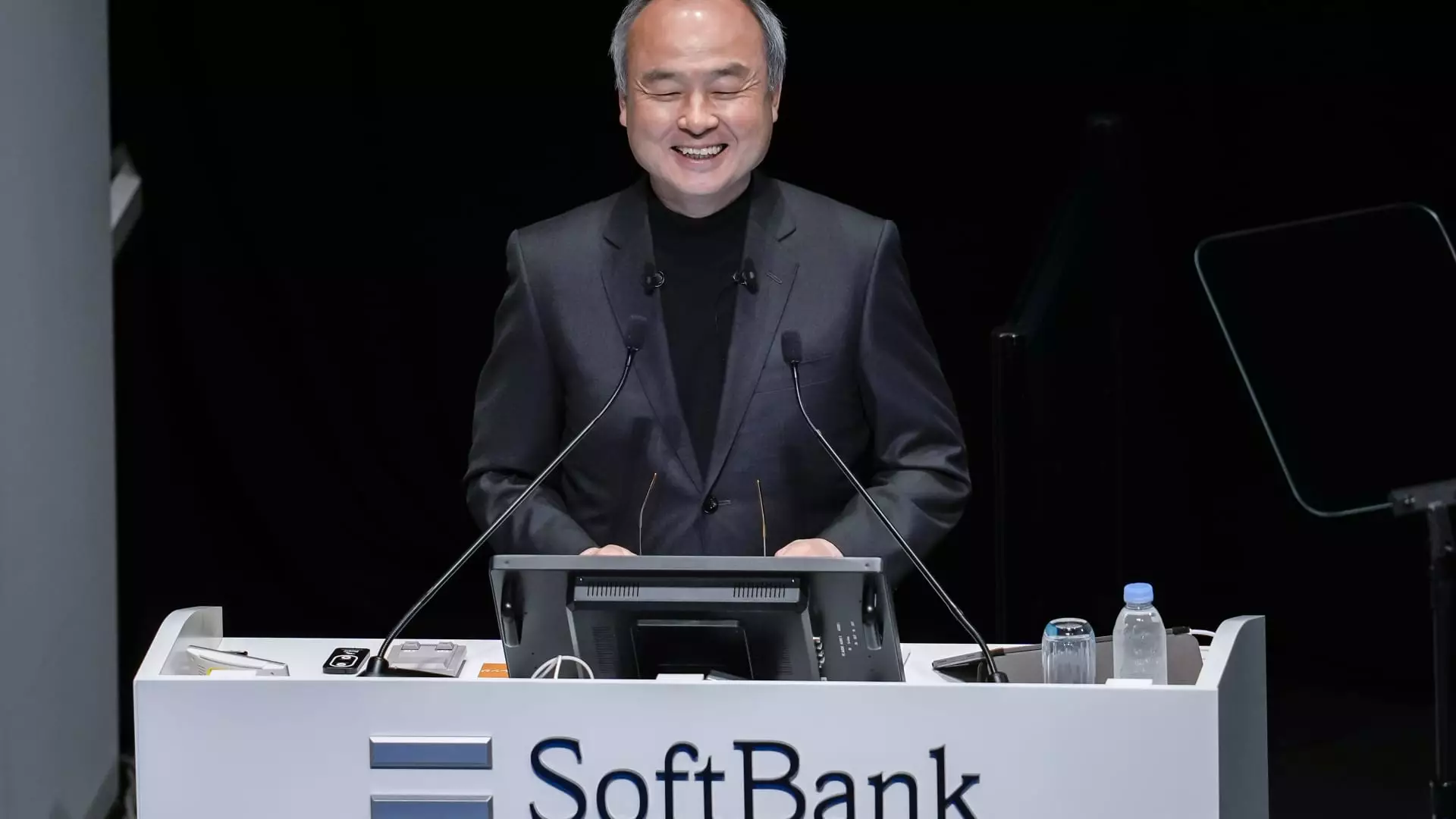The announcement of SoftBank’s $2 billion purchase of Intel shares appears, on the surface, to be a boost for the struggling chip giant. However, a closer analysis reveals a complex picture rooted more in strategic positioning than genuine confidence in Intel’s future. SoftBank’s decision to pay nearly full price—$23 per share when the stock closed just slightly below at $23.66—raises questions about its confidence levels. It’s hard not to interpret this as SoftBank hedging its bets rather than a resolute vote of confidence in Intel’s turnaround prospects. The investment positions SoftBank as a significant player with a 5th-largest shareholding, but it also exposes a glaring truth: Intel remains fundamentally uncertain, with its main challenges unresolved.
The fact that Intel’s shares surged modestly to $25 in after-hours trading isn’t an indicator of robust investor faith. Instead, it’s likely a reflection of speculative optimism, which is often misplaced in a company that has failed to capitalize on emerging technological trends, notably artificial intelligence. This move by SoftBank, an aggressive investor known for betting on transformative technologies, looks more like an opportunistic entry point rather than a definitive endorsement of Intel’s strategic direction.
Structural Flaws and Leadership Uncertainty Haunt Intel
Intel’s struggles are no secret, and recent leadership changes have done little to inspire confidence. The ousting of Pat Gelsinger and the appointment of CEO Lip-Bu Tan, a leader with a background more rooted in tech investments than operational turnaround, adds layers of uncertainty. Despite a modest 18% gain this year, Intel remains far from deterring its 60% plunge last year, which wiped out decades of market value. This decline is emblematic of broader systemic issues—an aging business model and the inability to innovate swiftly enough to compete in the high-stakes world of semiconductors.
Moreover, Intel’s foray into chip manufacturing for external clients—its foundry business—has yet to demonstrate its potential. The lack of a significant customer is a glaring blemish on its ambitions to compete with TSMC and Samsung. The company’s recent statement of waiting to secure orders before committing to further investments illustrates its fragile position; it’s a defensive posture more than a strategic leap forward. Without major clients, Intel risks stagnation, unable to leverage its manufacturing capabilities effectively or generate the revenue needed for sustainable growth.
Leadership instability, combined with a faltering business model and uncertain strategic focus, paints a picture of a company at a crossroads. If the current trajectory persists, Intel might become increasingly dependent on external investments—like SoftBank’s—more as a lifeline than a sign of long-term health.
Geopolitical and Policy Implications: A Mixed Bag of Opportunities and Risks
The political landscape further complicates Intel’s future. Its role as the sole American manufacturer capable of producing cutting-edge chips makes it a strategic asset, especially amidst rising global tensions and shifting supply chains. The U.S. government’s interest in potentially taking an equity stake underscores a recognition that Intel is too vital to fail. Yet, this political intervention also brings risks—government involvement may hinder Intel’s ability to operate independently and innovate effectively, as bureaucratic pressures and national security concerns shape its decision-making process.
Simultaneously, SoftBank’s expansive investments in AI and chip technology, notably in Arm and Ampere, highlight a strategic shift toward consolidating influence across the global semiconductor landscape. Their interest in Intel’s manufacturing prowess aligns with broader industry trends—expanding U.S.-based supply chains and reducing reliance on Asian manufacturing hubs. However, SoftBank’s increasing footprint in the tech sector also opens doors to unpredictable geopolitical entanglements and financial risks, especially considering its past overextensions.
The Biden administration’s economic policies also cast a long shadow. While there is clear support for bolstering domestic manufacturing—particularly in semiconductors—the readiness of companies like Intel to capitalize on this remains questionable. Intel’s hesitance signals that government support alone will not suffice; foundational issues in innovation, leadership, and strategic focus must be addressed if the U.S. hopes to lead the next wave of chip technology.
Reevaluating Intel’s Path Forward: Hope or Delusion?
In essence, Intel’s recent developments embody a company caught between hope and reality. SoftBank’s investment might buoy short-term stock prices and offer a semblance of support, but it does little to fix fundamental flaws. If anything, it underscores the company’s dependence on external capital to maintain relevance—a potentially dangerous sign of deeper internal rot.
The broader industry, infused with the ambitions of tech giants and geopolitical ambitions, looks to Intel as a symbol of American technological resilience. Yet, without a coherent plan to innovate and secure long-term clients, Intel risks becoming a bystander in the very landscape it once helped to shape. The current scenario demands critical introspection—casino-like speculation and political handouts cannot substitute for real strategic reform, innovation, and leadership.
Will Intel adapt, or will it remain a relic of past glory, propped up by opportunistic investors and political maneuvers? The answer hinges on whether the company can fundamentally reimagine its business model in an era defined by rapid technological change and fierce global competition. Until then, SoftBank’s investment appears more like a fleeting flicker of optimism rather than a definitive step toward revival.

